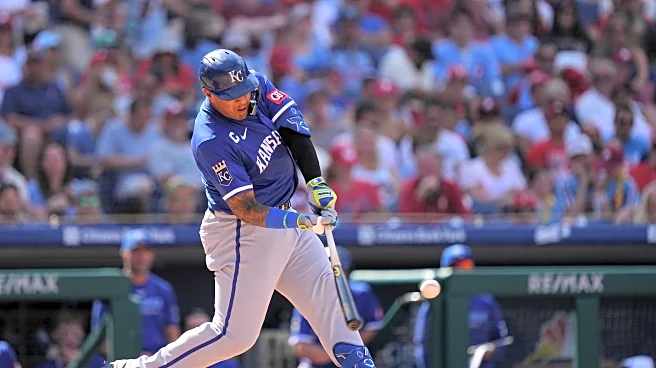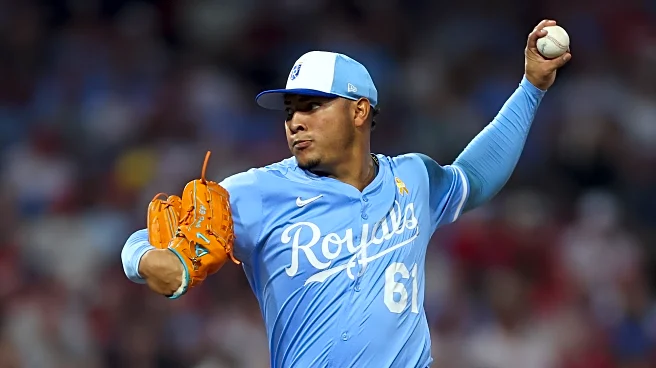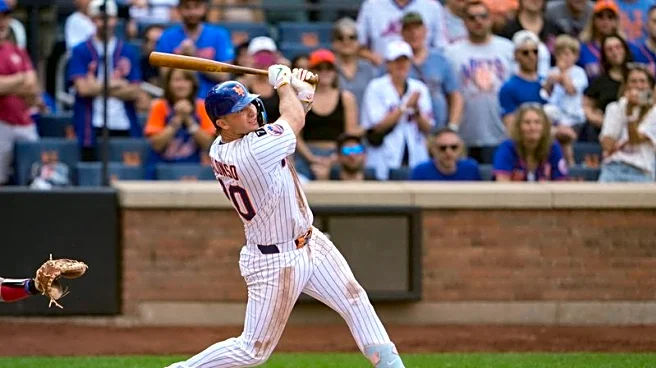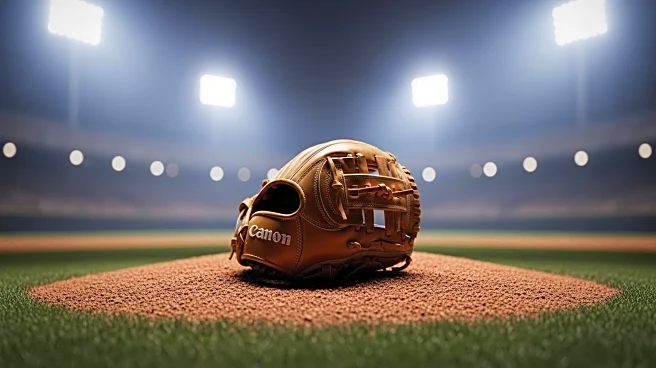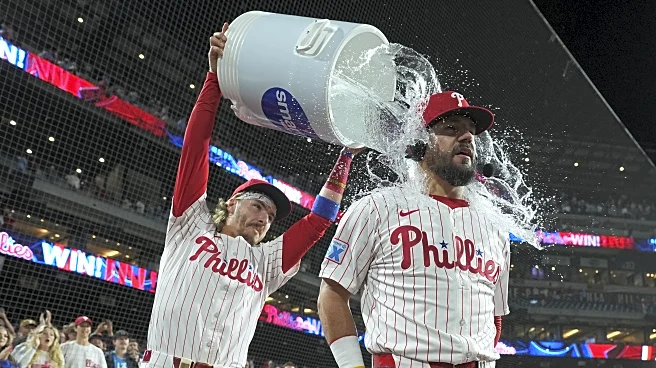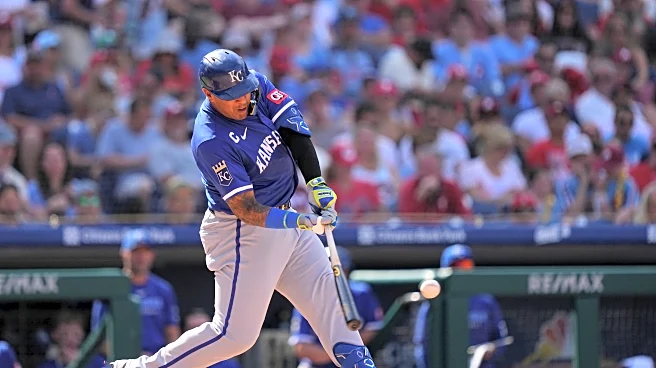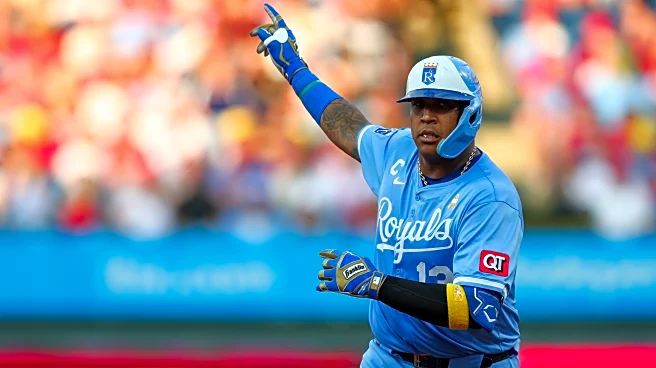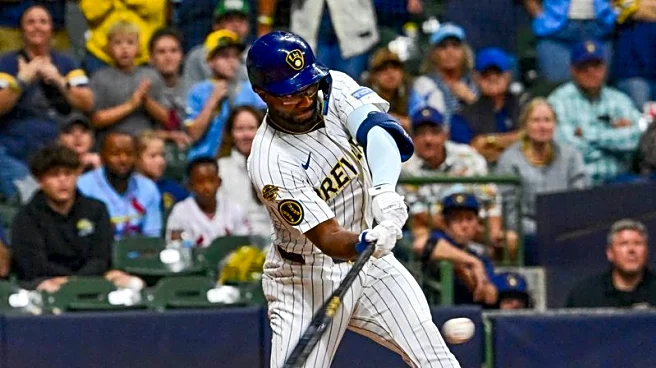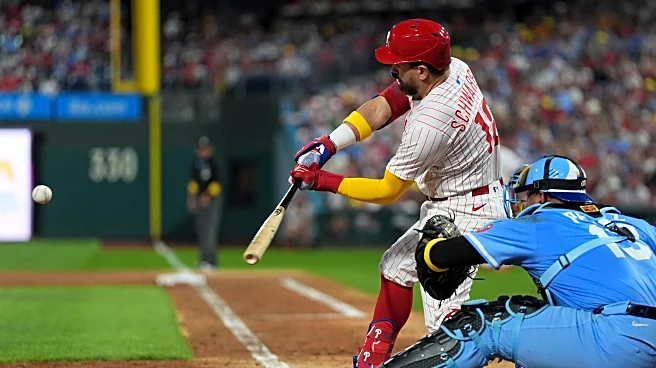It was a bad week for the Royals, despite some good output from Salvador Perez, who achieved some major career milestones in Philadelphia. He hit his 300th (and 301st) career home runs, becoming just the eighth catcher in the history of AL/NL baseball to reach that mark.
That is pretty elite company – six of those catchers are in the Hall of Fame. Lance Parrish was a very good catcher for a long time, but received very little support (1.7 percent of the vote) when he was on the ballot in 2001. Is Salvy destined to end up in Cooperstown or will his case be treated more like Parrish?
There are currently 20 catchers in the Hall of Fame – only third base has fewer representatives in Cooperstown with 19. The catchers from the first half of the 20th century elected by writers to Cooperstown were Bill Dickey, Mickey Cochrane, and Gabby Hartnett, all great catchers, but in a much different offensive era. Also playing in the first half of the century were Roger Bresnahan, Buck Ewing, Rick Ferrell, Josh Gibson, Ernie Lombardi, Biz Mackey, Louis Santop, and Ray Schalk, but they were elected to the Hall of Fame through special committees.
Let’s focus on the catchers inducted since World War II. There have been just nine – Johnny Bench, Yogi Berra, Roy Campanella, Gary Carter, Carlton Fisk, Joe Mauer, Mike Piazza, Ivan Rodriguez, and Ted Simmons. Simmons was elected by a special committee, while the rest were voted in by writers. Here is how they stack up:
- Yogi Berra – 2,120 games, 2,150 hits, 358 home runs, .285/.348/.482, 59.5 rWAR, 3x MVP, 18x All-Star
- Johnny Bench – 2,158 games, 2,048 hits, 389 home runs, .267/.342/.476, 126 OPS+, 75 rWAR, 2x MVP, 14x All-Star, 10x Gold Glove winner
- Roy Campanella – 1,449 games, 1,422 hits, 260 home runs, .283/.363/.496, 125 OPS+, 42 rWAR, 3x MVP, 11x All-Star
- Gary Carter – 2,296 games, 2,092 hits, 324 home runs, .262/.335/.439, 115 OPS+, 69.9, rWAR, 11x All-Star, 3x Gold Glove winner, 5x Silver Slugger winner
- Carlton Fisk – 2,499 games, 2,356 hits, 376 home runs, .269/.341/.457, 117 OPS+, 668.3 rWAR, 11x All-Star, 1 Gold Glove, 3x Silver Slugger winner
- Joe Mauer – 1,858 games, 2,123 hits, 143 home runs, .306/.388/.439, 124 OPS+, 55.2 rWAR, MVP, 6x All-Star, 3x Gold Glove winner, 5x Silver Slugger winner
- Mike Piazza – 1,912 games, 2,127 hits, 427 home runs, .308/.377/.545, 142 OPS+, 59.4 rWARR, 12x All-Star, 10x Silver Slugger winner
- Ivan Rodriguez – 2,543 games, 2,844 hits, 311 home runs, .296/.334/.465, 106 OPS+, 68.4 rWAR, MVP, 14x All-Star, 13x Gold Glove winner, 7x Silver Slugger winner
- Ted Simmons – 2,454 games, 2,471 hits, 248 home runs, .285/.348/.437, 118 OPS+, 50.4 rWAR, 8x All-Star, 1 Silver Slugger
Here’s how Salvy stacks up so far:
- Salvador Perez – 1,695 games, 1,702 hits, 301 home runs, .265/.301/.458, 105 OPS+, 35.2 rWAR, 9x All-Star, 5x Gold Glove winner, 5x Silver Slugger winner
Here are the best catchers not in the Hall of Fame:
- Brian McCann – 1,755 games, 1,590 hits, 282 home runs, .262/.337/.452, 110 OPS+, 31.6 rWAR, 7x All-Star, 6 x Silver Slugger
- Lance Parrish – 1,988 games, 1,782 hits, 324 home runs, .252/.313/.440, 106 OPS+, 39.5 rWAR, 8x All-Star, 3x Gold Glove winner
- Jorge Posada – 1,829 hits, 1,664 hits, 275 home runs, .273/.374/.474, 121 OPS+, 42.7 rWAR, 5x All-Star, 5x Silver Slugger
Offensively, there is little doubt that Perez is one of the best power-hitting catchers in baseball history. He seems likely to end up fifth in career home runs for a catcher, and he could even challenge Berra for fourth on that list. But being high on that list likely won’t be enough for induction. Jeff Kent is the all-time leader for career home runs at second base and is not in. Darrell Evans is fifth among all third basemen but is not in. Miguel Tejada is second among shortstops, and received just 1.2 percent of the vote.
What really hurts Salvy is that he has been pretty one-dimensional on offense. He has hit a lot of home runs, but has never hit for average, gotten on base much, or provided much value on the bases (to be fair, not many catchers do). He has a career on-base average of .301, which would be lower than any non-pitcher in the Hall of Fame except Bill Mazeroski at .299. And Salvy could sink below that in the decline phase of his career (if he ever has one). Voters have been unwilling to induct hitters who hit a lot of home runs but with a very low batting average, such a hitter like Dave Kingman. On-base average is now viewed the way batting average was a few decades ago, so a sub-.300 on-base average could be a dealbreaker for Salvy.
However, Kingman was an awful defender, while Salvy is a five-time Gold Glove winner, despite the knock on his framing skills. Some voters will see the framing metrics and WAR totals as gospel, while others will take them as a grain of salt, using the Gold Gloves as a better indicator of his defensive prowess. But with 75 percent approval required for induction, Salvy cannot afford to lose many voters.
Salvy also won 2015 World Series MVP, which counts for something, but probably won’t move the needle much on a résumé. It probably helps that Salvy did win a ring – had he spent his entire career playing for a losing team, that could color the minds of voters a bit. He did elevate his game on the biggest stage and was a leader on a team that won it all. But the award itself is based on a handful of games – Pat Borders won it once. It’s icing on the cake, but not ballast for a Hall of Fame case.
What helps more is that he had a regular-season MVP-level season in 2021, when he led the league in home runs and RBI. He finished seventh in voting that year, just one of two seasons he has finished in the top 20 (he finished 17th in the shortened 2020 season). Of the nine post-war catchers in the Hall of Fame, five won an MVP (Berra, Bench, Campanella, Mauer, Rodriguez). Mike Piazza finished in the top ten in MVP voting seven times, Gary Carter and Carlton Fisk each finished there four times, and Ted Simmons finished top ten just twice. Among non-Hall of Fame catchers, Lance Parrish and Jorge Posada finished top ten in MVP voting twice, while Brian McCann never did. The Hall of Fame is about greatness, and Salvy has shown he can be great in a year.
Also helping Salvy’s résumé as his intangibles. He has been the long-time face and leader of a franchise, an exemplary individual on and off the field. He won the Roberto Clemente Award in 2024 for his humanitarian efforts. He is respected around the league by teammates and opponents alike and has a great relationship with the media. In edge case such as his, this can be the nudge needed for induction. Voting for Salvy makes you feel good in a way that voting for a jerk does not.
So does Salvy end up in Cooperstown? I think he has a really tough case. In a lot of ways, his numbers look similar to Parrish – power-hitting catcher, both excelled in their only World Series, good defender, but low on-base average. Is he better than Parrish? He still has a chance to prove it over the next few seasons. The bar of Hall of Fame induction is very high – too high, some would argue – and I think most likely the BBWAA considers him for a few ballots, but he falls off well short of receiving enough votes.
But the Hall gives a second look to those candidates the writers couldn’t find consensus on. That is where the intangibles and goodwill that Salvy has accrued could help his case. Ted Simmons was a long-time catcher who was more fully appreciated long after he had retired and baseball writers passed him over for induction. Perhaps one day we will see Salvy’s plaque smiling back at us in his Royals cap in Cooperstown. Regardless, he has had a fantastic career that has been a joy to watch.


